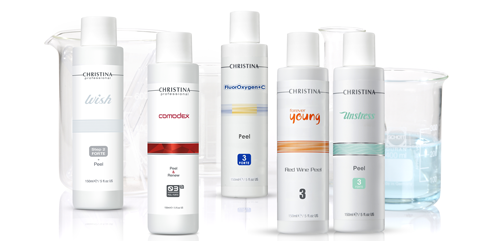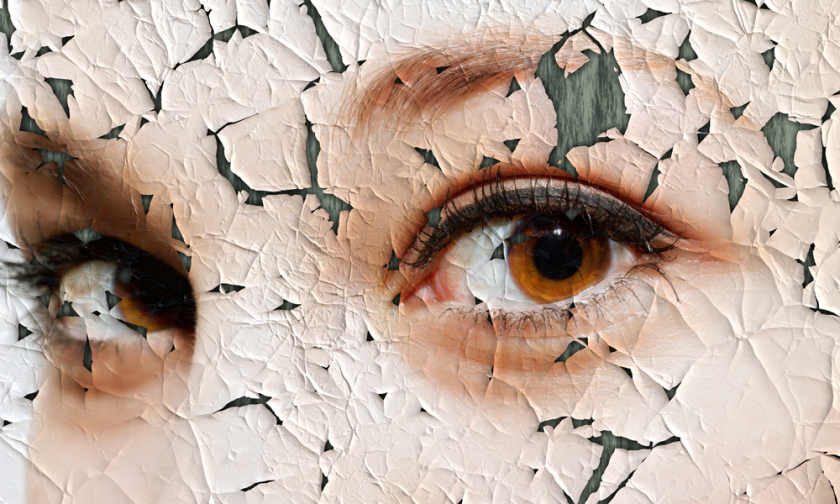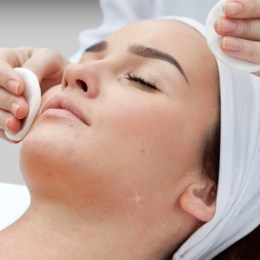Skin peels circa 2017 are not just about shedding old layers. They are just as much about laying foundations for the future.
If you keep peeling layers off an onion you will see juicy new flesh each time. Then each layer will become progressively weak and vulnerable and deteriorate faster than those before, until there’s nothing left of worth.
Treating skin in this fashion – whether for purposes of rejuvenation or correction of certain conditions, or both – is strangely similar.
Contemporary skin peeling systems, many now developed by advanced cosmeceutical skincare brands, offer a holistic approach that protects and promotes skin health and integrity.
They have been embraced by advanced dermal therapists and cosmetic medical professionals alike because of this, and for the added benefits of less invasiveness and, ergo, downtime.
After all, how many consumers have the time or inclination these days – unless the skin’s condition truly warrants it – to spend days or even weeks in virtual hiding while their skin oozes and scabs, swells and looks red raw while it heals, with prolonged redness and then unnatural-looking pinkness for perhaps months afterwards? Um, not many …
Not to mention the enhanced risk of complications such as infection, when newly exposed skin is so … well … exposed.
SPA+CLINIC spoke to Matoyla Kollaras*, Managing Director of Skin Factors – distributor in Australia for Christina Cosmeceuticals professional protocols and home skincare regimens, and now Christina Forte professional peeling systems – for her opinion:
Aggressive skin peels are not worth it because I don’t believe treatment outcomes are significantly better than less aggressive peels, and neither is the risk of side effects worth it.
Simply put, aggressive peels lead to deep skin injury, and deep injury causes prolonged healing and may cause scarring.
In some cases you may also see a sharp demarcation where the peel ended – both unsightly and difficult to correct.
The first consideration is skin colour. Deep peels, and even some medium peels, are contraindicated in Asian and darker skin tones.
I also don’t feel the pain, recovery or downtime are worth the improvement in skin texture or increase in collagen.
Deep chemical peels require a full week (sometimes two weeks) of isolation with patients/clients often taking time off work, avoiding the sun, skipping regular home care, and avoiding exercise.
This is all aside from the pain involved, requiring a spray bottle of water kept in the refrigerator to cool and calm the skin and maximum doses of painkillers.
In addition, there is the risk of swelling and secondary infection, as the skin is left vulnerable to the elements. There is also the risk of longterm skin sensitivity.
However, my main concern with deep and aggressive peels is the risk of hypopigmentation, such as also caused by disease, injury, burns or other trauma to the skin.

Hypopigmentation can be tricky to treat – indeed in most cases it is irreversible. As we know, melanin production is a crucial part of the skin’s defence system and its main function is protective; to filter out UV rays that damage DNA and harm the skin, causing photo-damage, premature ageing and even skin cancers including melanomas.
Infrared heat is also of concern in a hot and dry country like Australia. We can burn even the shade because of heat alone.
Those who have undergone deep peels where depigmentation has occurred must forever avoid sunlight, but sunlight is also vital for our physical and mental health.
When we cause hypopigmentation/post inflammatory hypopigmentation, we have in effect reduced the skin’s own defence system against aggressors – why would we risk this to skin and our overall health?
My recommendation is light peels to “chip away” at acne, ageing and pigmentation, done on a weekly basis for as long as required to achieve desired results.
Doing light peels more often gives the same results as one big, deep peel without the isolation, pain, downtime, interruption in routine or the serious risks that can be involved.
Pre and post care is important so that the skin can be well prepared for the treatment and to expedite recovery time.
Tips pre-peeling:
- Ensure skin is as healthy as possible – no signs of redness, irritation and excessive sensitivity. Needless to say, peels are contraindicated in certain skin conditions, such a eczema
- Ensure good hydration levels. For instance, get your patients on serums that contain good water-binding agents
- Ensure good microcirculation
- You may wish to get your patients started on a home care routine of retinol cream, and a mild acid-based cream to start the turnover processes, while also strengthening the skin
THE SKIN PEEL INDEX
Matoyla gives a rundown:
Phenol peels and aggressive deep CO2 laser resurfacing cause the deepest injury of any peels and so can cause permanent skin lightening/hypopigmentation, and thus should only be used on very light complexions.
Next is TCA (trichloroacetic acid) at 35-50%.
Layering less aggressive peeling agents like Jessner or glycolic acid 70% with 25% TCA is another option.
15-30% glycolic, 10-15% TCA, 5-10% LHA and 20-30% salicylic acid are the typical “lunchtime peel” agents.
ABOUT CHRISTINA FORTE PEELS
“They are not raw acids,” says Matoyla. “They have been formulated carefully to minimise risks – safe peeling without compromise on results.
“Christina Forte Peels contain antioxidants, anti-inflammatory and antimicrobial ingredients that promote immediate repair on a microscopic level.”
*Matoyla Kollaras is a qualified therapist and the director of Skin Factors, distributor in Australia of Christina Cosmeceuticals and AHAVA Dead Sea skincare. She is passionate about skin health and treatments and is highly committed to constantly staying at the forefront of research and new advances in skin science and cosmetic ingredients.




